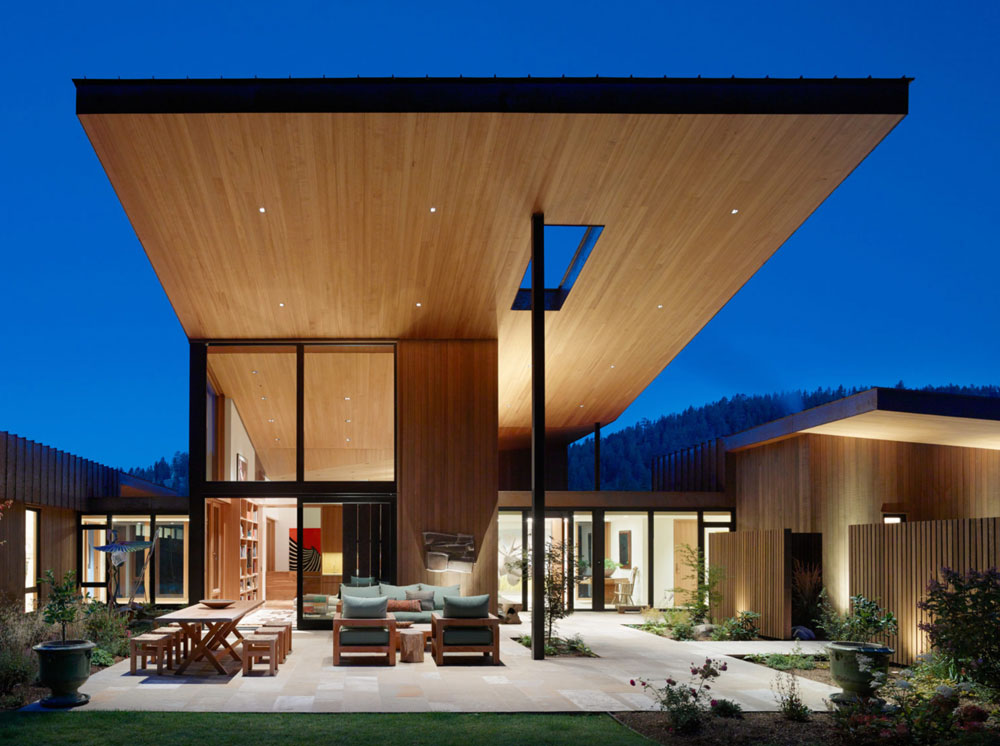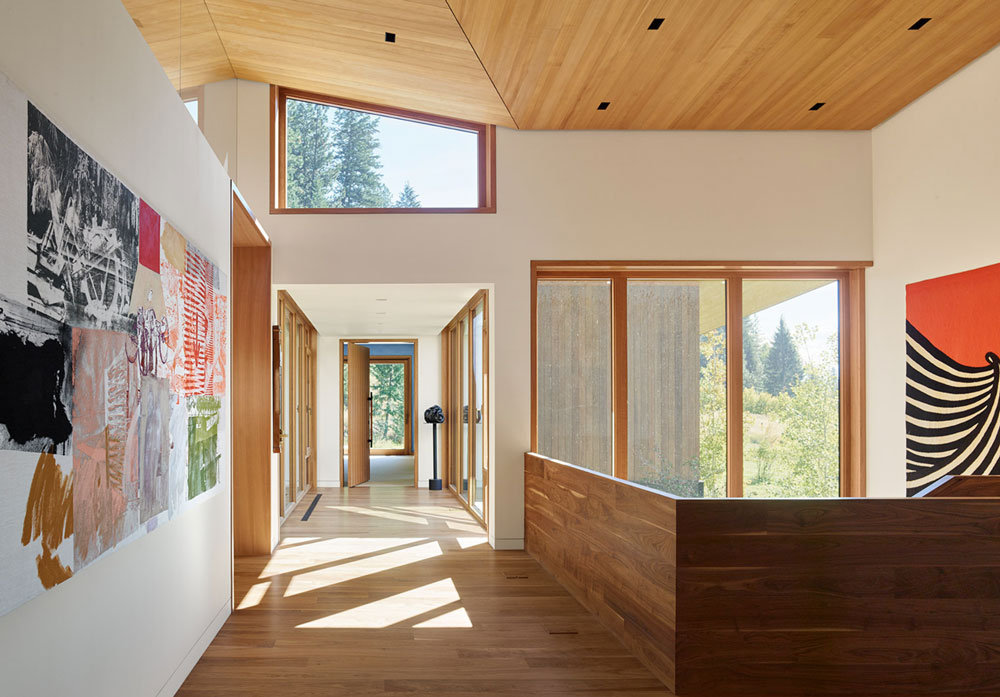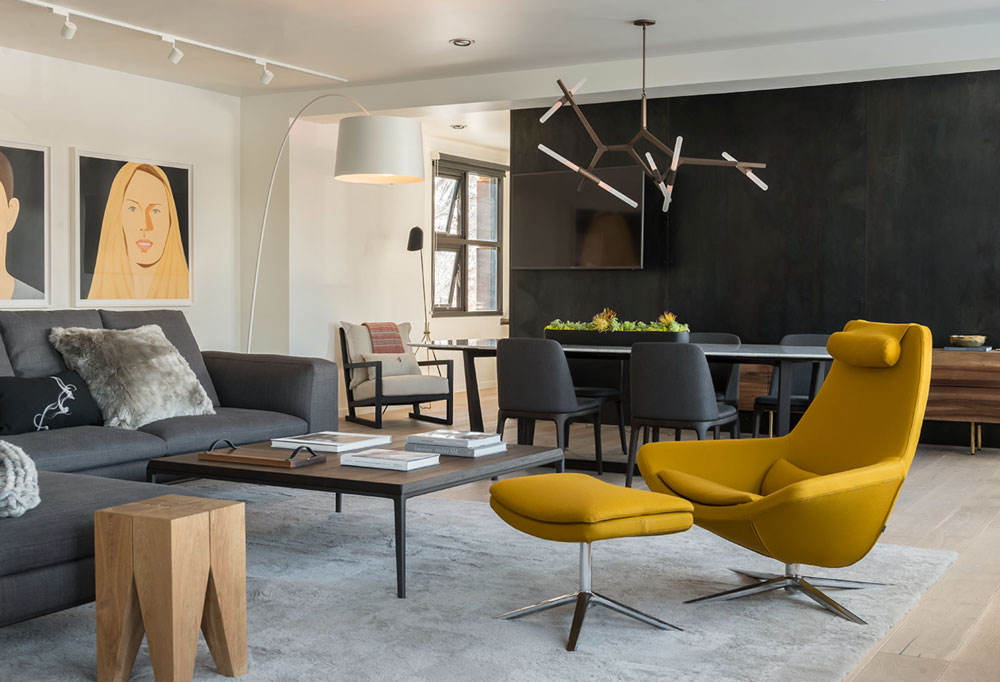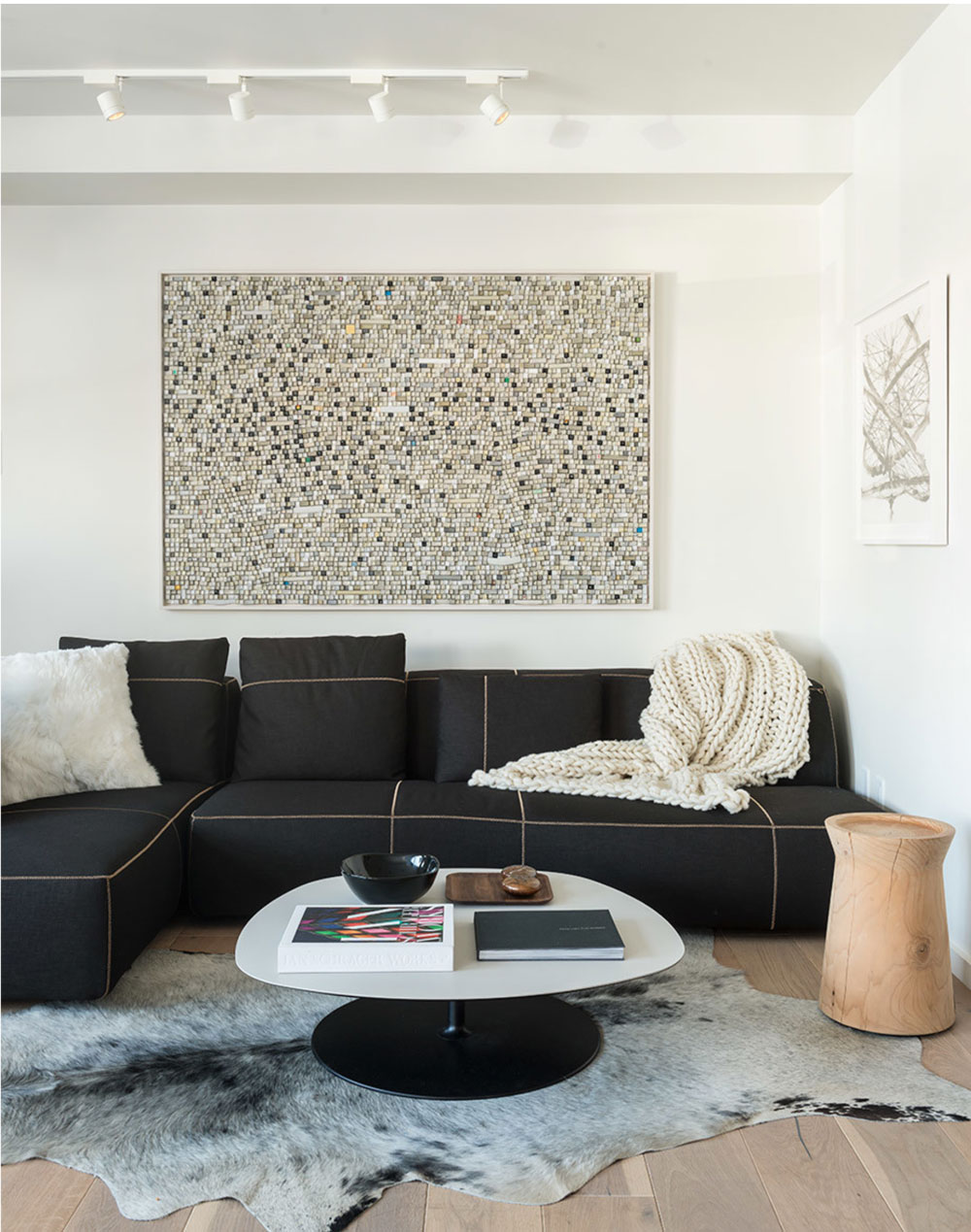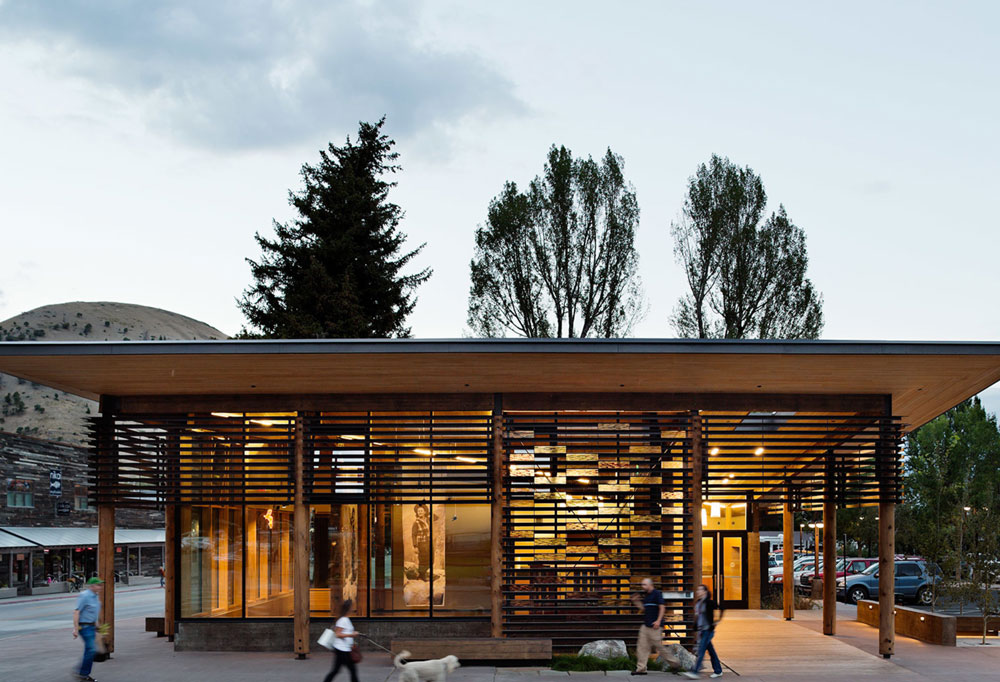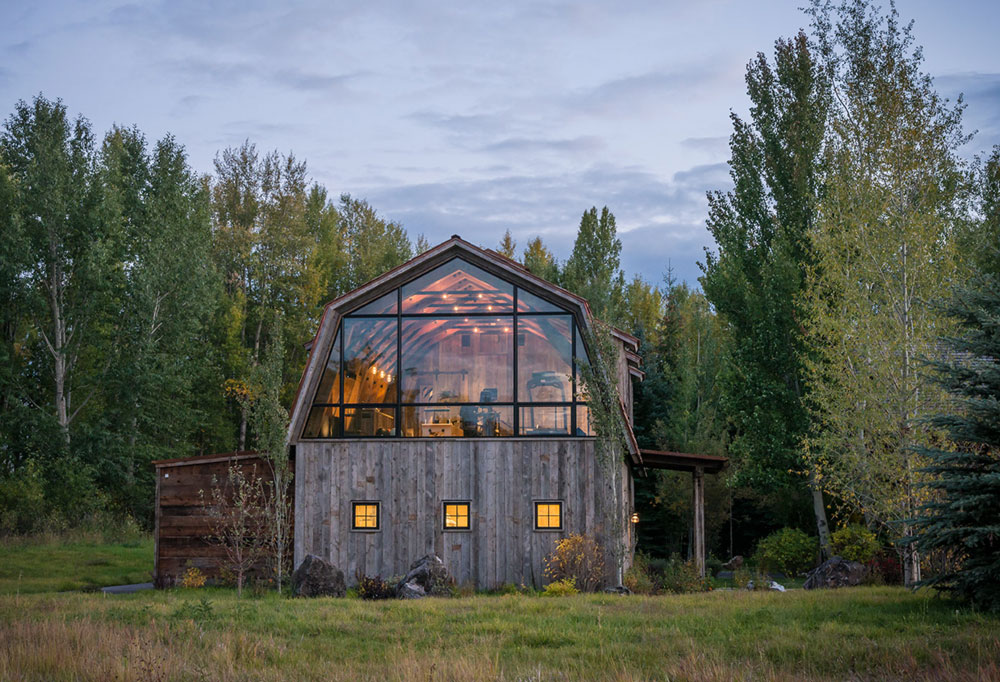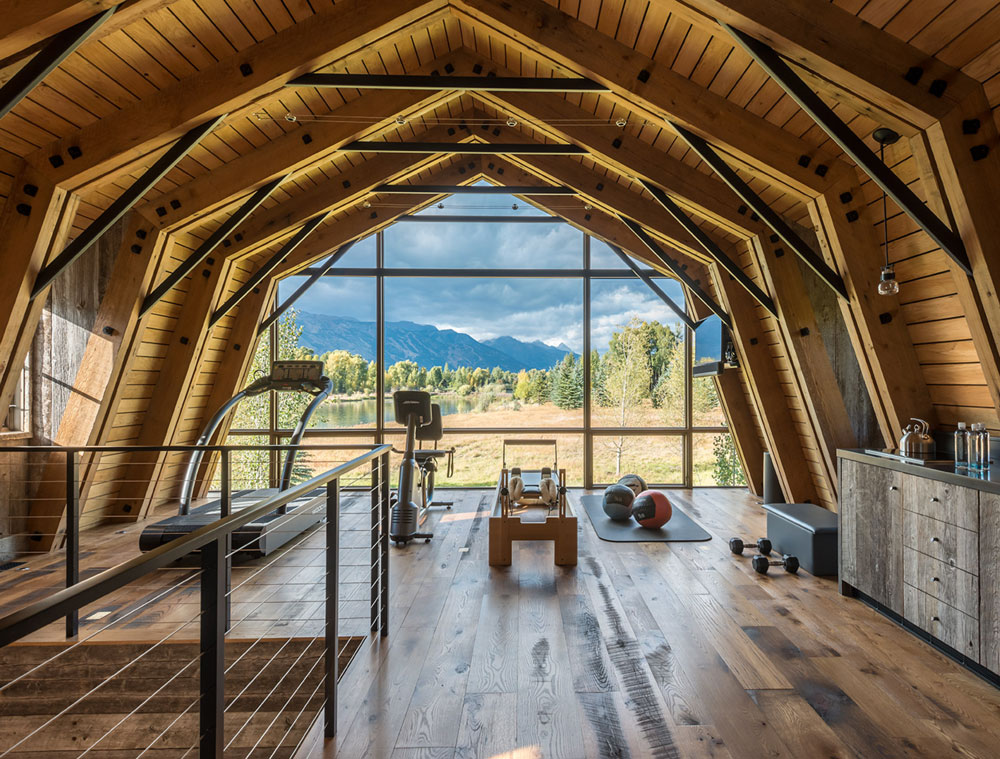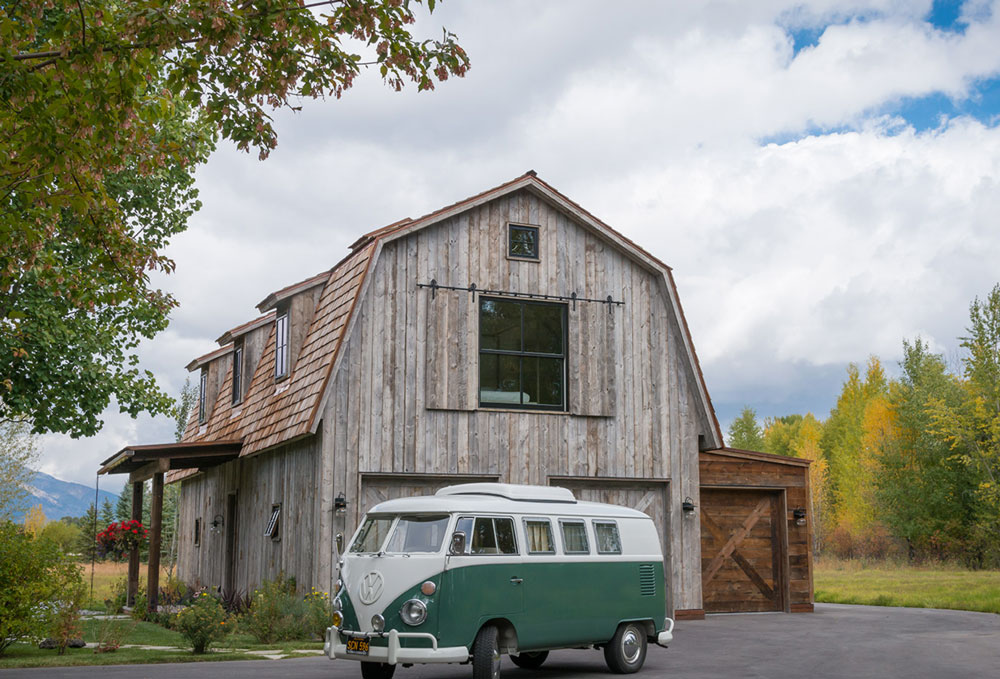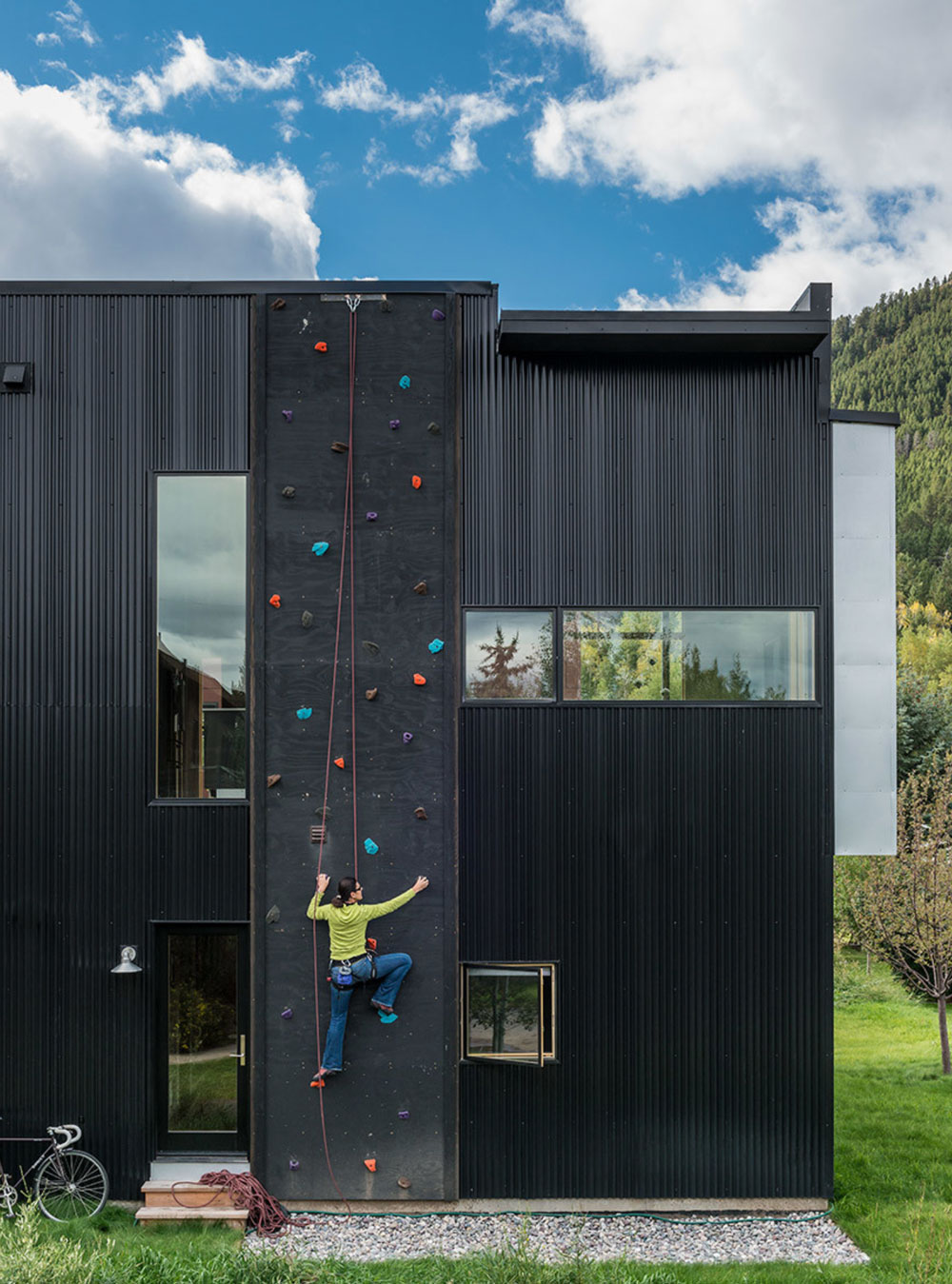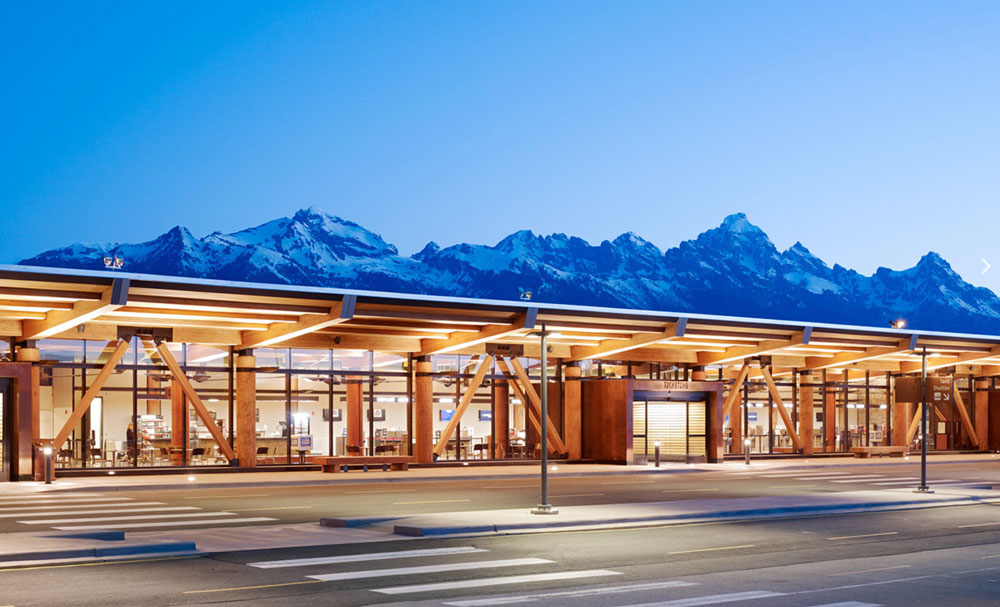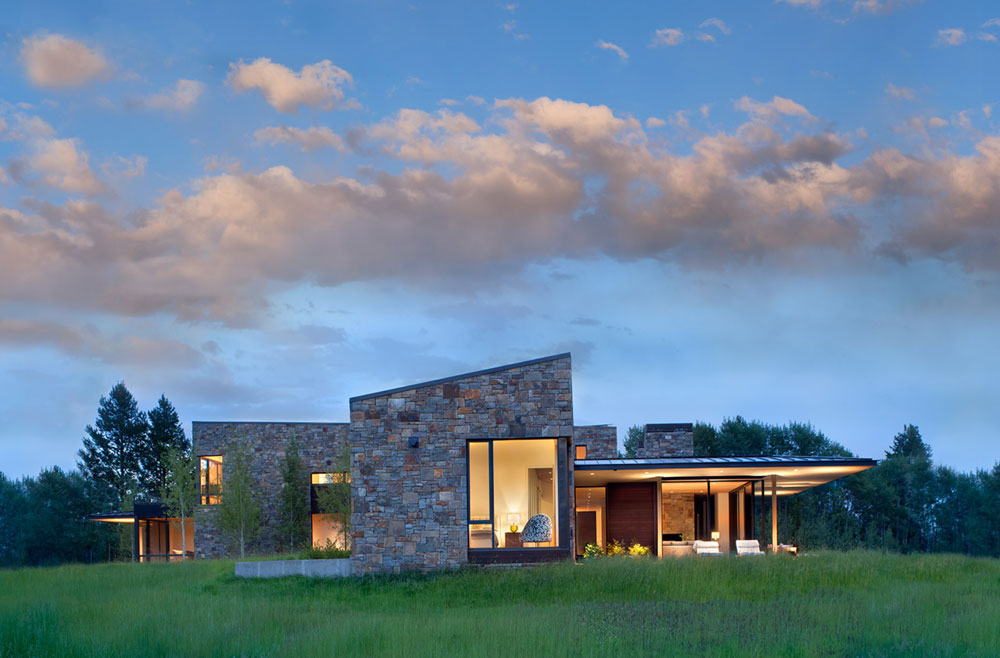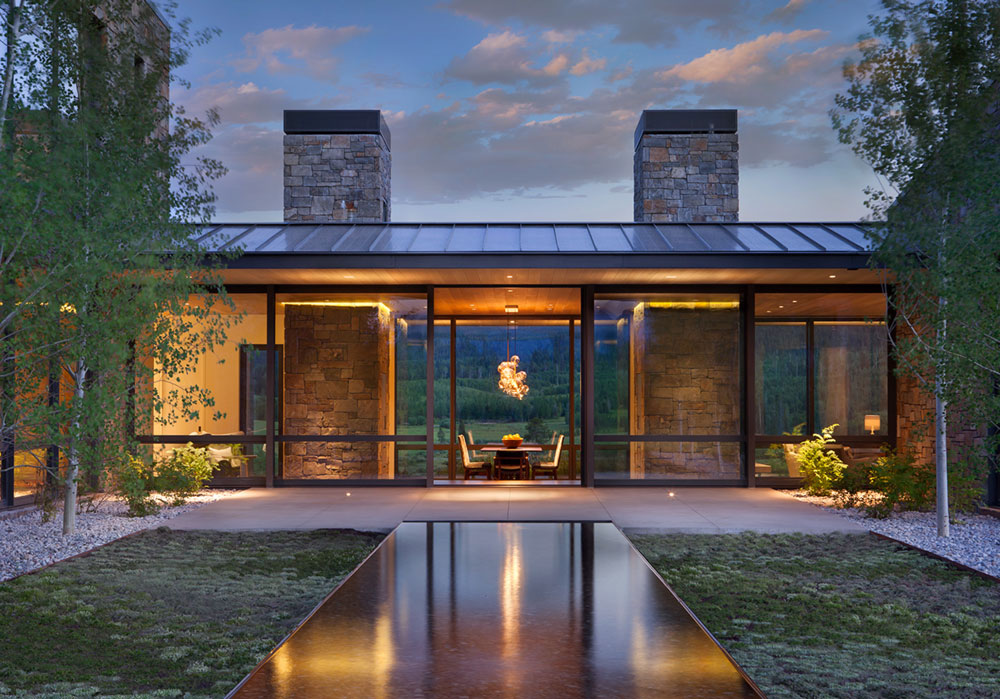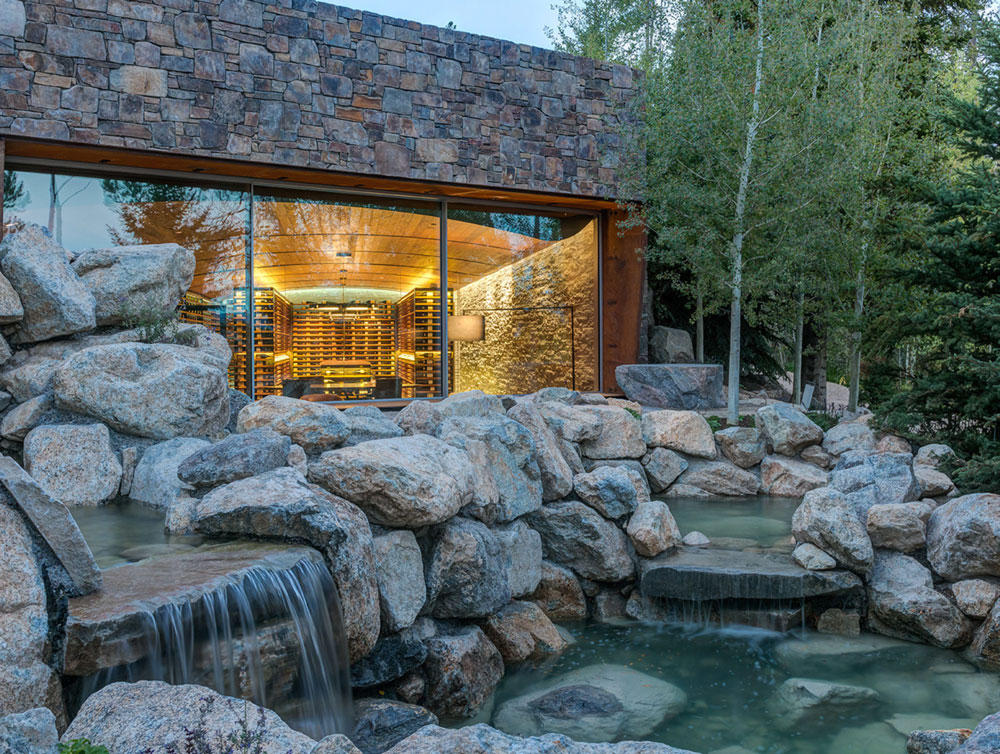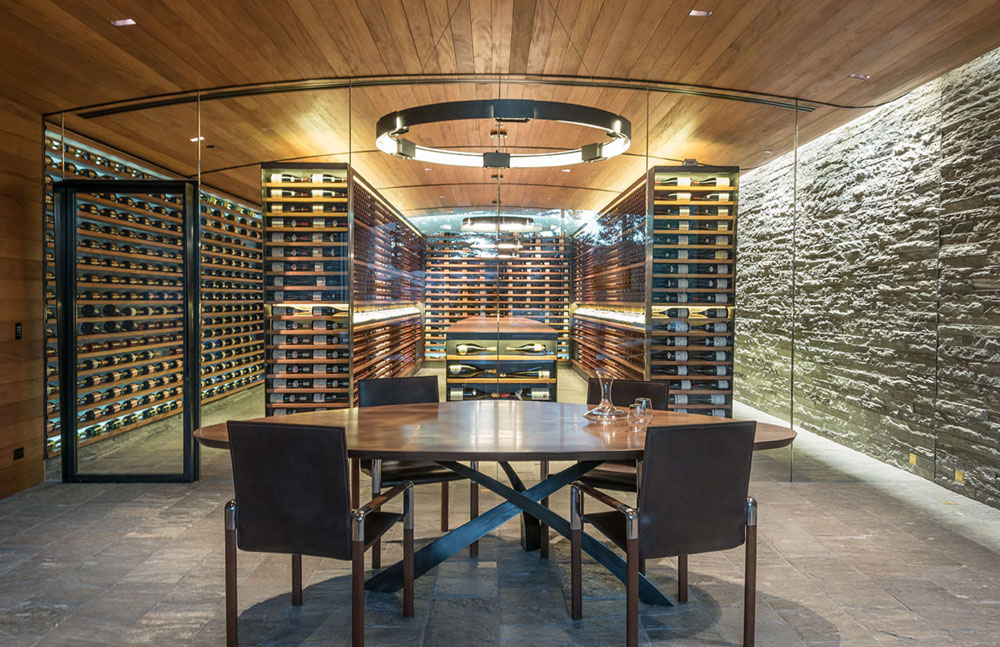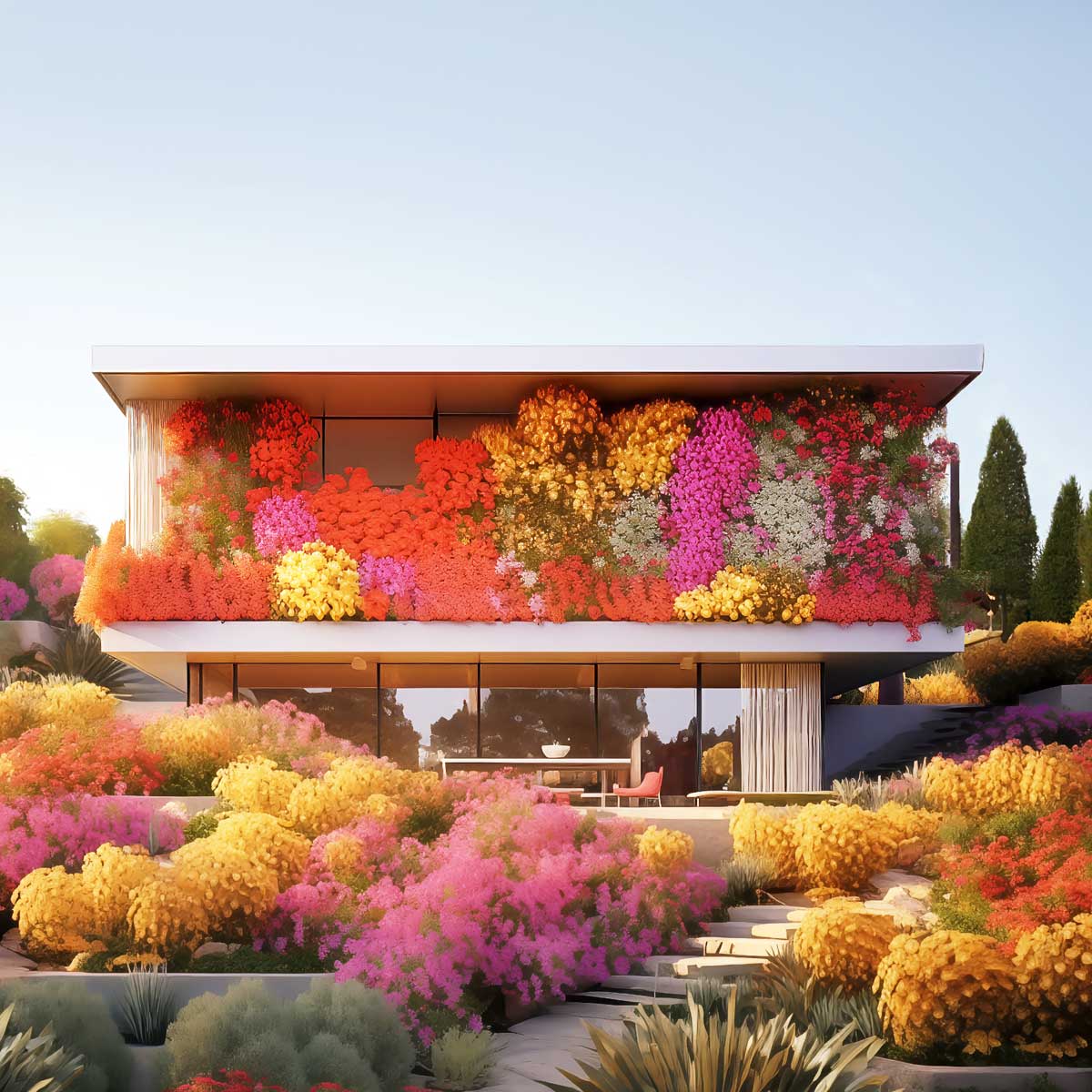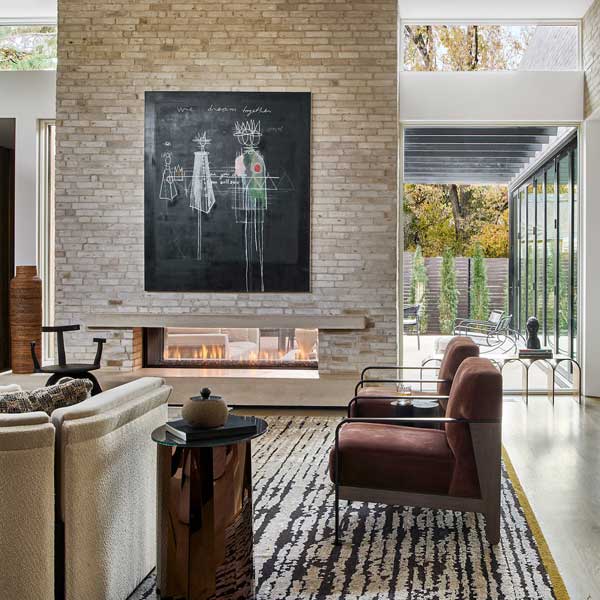THE ROCKY MOUNTAIN REGION IS BEST KNOWN FOR THE ARRESTING BEAUTY OF ITS WIDE OPEN SPACES. WITH AN EYE TOWARD THE FUTURE, WYOMING-BASED ARCHITECTURE FIRM CARNEY LOGAN BURKE CREATES DRAMATIC, CONTEXTUALLY INSPIRED STRUCTURES TO SUIT THOSE MAJESTIC ENVIRONS.
Words: Charlie Keaton Images: Matthew Millman, Audrey Hall, Gibeon Photography and Paul Warchol
The hustle of modern life is pushing a growing number of people from coastal metropolitan hubs to the relatively open spaces of the American west. Colorado added more than 90,000 residents last year, surpassing 5.5 million for the first time. A little further north, Wyoming ranks 15th in population growth rate.
With such large-scale influx, our built environment is in a constant state of change. But how best to manage that growth and advance design while simultaneously preserving the region’s natural splendor?
RCR – Resting on eight acres, this 9,000-square-foot Montana house is actually a series of connected buildings surrounding an elevated courtyard. Built for a couple whose previous ranch property was designed by famed Argentinian architect Emilio Ambasz, the home was constructed around two central priorities. First came siting strategy, which takes advantage of a meadow that runs up against the base of a butte with old growth pine. Next came the creation of a space suitable for the clients’ world class art collection – a compound contextual enough to fit the surrounding area, strong enough to stand on its own merits, and flexible enough to let the art shine through. The interiors feature a reductive materials palette, with wood and plaster surfaces that add warmth without competing with the show-stopping pieces scattered throughout the home. Photos by Matthew Millman
The answer is rooted in vernacular architecture, a movement that emphasizes local influence, contextual materiality, and fitting snugly into the surrounding environment. One significant champion of that ethos is Carney Logan Burke. The Wyoming-based firm brings an appropriately modern sensibility to parts of the U.S. not typically associated with architectural innovation. Their reputation, which now extends nationally, is built on residential and commercial projects that weave forward-thinking principles into the landscape’s very fabric.
“We feel a reverence for the land in the West. The sites we get to work with are intense and incredible,” said Principal Eric Logan, a Wyoming native whose early career included a four-year stint at two Denver firms, Blue Sky Studio and Urban Design Group. It was here that he met John Carney, and by the mid-1990s, the two were reunited in Jackson Hole at the firm that bears their names. Along with fellow Principals Kevin Burke and Andy Ankeny, they oversee a team of more than 30 that’s enjoying expansion into new realms and new territories.
More on that later, but back home in Wyoming, much of the land they so revere is (rightly) protected from development of any kind, and existing sites face stiff resistance to change in any form. The challenges of creating lasting work are compounded by the scarcity of available sites and the limitations imposed on others.
Furthermore, the rustic Adirondack aesthetic, evidenced as far back as Robert Reamer’s early 20th century work at Yellowstone National Park, no longer feels appropriate. The incorporation of contemporary ideas and materials are a key element in the growth of the wide open west.
STUDIO 110 – In addition to their esteemed architectural work, Carney Logan Burke recently partnered with Denver furniture showroom Studio Como for an on-site, multi-use space known as Studio 110. Set in CLB’s Jackson Hole headquarters, the combination showroom/conference area gives the firm an opportunity to foster their growing interior design business, thus offering a more comprehensive scope of client services. For Studio Como, the collaboration has provided seamless entry to a new (and growing) market. With the forthcoming expansion to Bozeman, Carney Logan Burke has taken space in a soon-to-be-renovated canning warehouse, where Studio Como will bring their unique blend of European furniture, lighting, and kitchen componentry to Big Sky Country. Photos by Audrey Hall.
But getting to that point doesn’t require an abandonment of setting or tradition. Carney Logan Burke is among a growing number of firms that focus heavily on site orientation, landscape precedent, and materiality.
“A modern palette in Jackson Hole should look and feel different than a modern palette in Los Angeles,” said Logan, who has served in a variety of community leadership roles (including the local design review board) since migrating from Colorado in 1995. “The environment is just completely different. To plop a white steel and glass building in Jackson would certainly make a statement, but it’s not respecting place.”
And what a place it is. The Laurance S. Rockefeller Preserve, for instance, is an 1,100-acre inholding of land gifted to the National Parks Service. The site’s Interpretive Center was conceived around ideals of environmental stewardship and conservation, and required a suitably quiet structure. In response, Carney Logan Burke created a 7,000-square-foot structure featuring an L-shaped, rectilinear order that curves to an apse-like form at the south end. Vertical wooden slats call to mind old barns, complete with gaps between boards that usher narrow slits of light to the serene interior. The building was the first in the National Parks Service to achieve LEED Platinum status.
Similarly, the firm’s work on the Jackson Hole Airport earned a LEEDSilver designation. That project was particularly heavy on regional and recycled materials, including Forest Stewardship Council certified timber. Like the airport, many of their projects juxtapose traditional and modern materials, from ledger cut Montana sandstone and grain cedar siding to Bonderized panels and blackened steel recessed into a mahogany wall.
HOME RANCH – Jackson Hole’s Home Ranch Welcome Center rests at the northern entrance to historic downtown, where it provides visitor information about opportunities for discovery in the town of Jackson and the surrounding National Parks. Program components are expressed individually, as an opaque concrete enclosure houses restroom facilities, and a gallery on the public corner is light-filled and transparent. Inspiration for the project was taken from the regional abundance of porches, which provide welcome, shelter, and entry for natives and tourists alike. Carney Logan Burke also worked with a local artist to create Jackson’s first publicly funded art project, Strands. The work is made of glass bricks representing bison and bear DNA, and those bricks are integrated into the building’s solar shade screens. The Home Ranch Welcome Center won three AIA Awards, including a 2014 Award of Excellence from the Wyoming Chapter. Photo by Paul Warchol.
THE BARN – What looks from the exterior like a possible renovation project was actually built from the ground up to resemble the traditional barn form, while also incorporating modern and contemporary elements. Said Eric Logan, “In keeping with the rest of the architecture of the compound of buildings there, this needed to be a traditional take on architecture, with the old wood, the gambrel roof form, and the dormers.” The interior expression, on the other hand, is light and airy, with an exposed structural system and floor-to-ceiling glass walls on the upper level. “You ascend the stairway and get this beautiful view of the structure and the contrast of light and dark in the ceiling. Then there’s this incredible exposure from 15 feet off the deck, and the dramatic view of the Teton range beyond.” Photos by Audrey Hall.
CACHE CREEK – With constraints arising from issues of budget, footprint, and a densely populated neighborhood, this project took the form of a simple, inverted two-story box. The upper level features the master bedroom, living area, and kitchen, as well as decks and windows that connect to views of nearby ski slopes. The lower level contains two guest bedrooms, garage, and utility area. Inside, high ceilings and generous glazing emphasize daylight, while the exterior is clad in black corrugated metal and galvanized steel-clad projections. The structure’s height allows for roof access and even a climbing wall on the north elevation. Photos by Audrey Hall.
JACKSON AIRPORT – Carney Logan Burke, as the Associate Architect, collaborated with Gensler on the 110,000-square-foot, two-phase renovation and expansion of the existing airport in Grand Teton National Park. The heart of the project was the move from a previously clustered building into an open, functional, well-lit space that retained the region’s character. Moreover, sustainable strategies and materials were featured throughout: low-flow plumbing fixtures, recycled materials, Forest Stewardship Council certified timber, and low-emitting paints and carpets, culminating in a LEED Silver rating. Photo by Matthew Millman.
In some cases, contextual constraints serve as catalysts for inspired design choices. One residential project in a tightly prescribed subdivision required strict adherence to traditional architectural style – but not at the expense of a clean and balanced program. An exterior of natural stone and reclaimed barn wood features cantilevered eaves that showcase mountain views while protecting the home from harsh seasonal weather. The interior contrasts white oak millwork with natural timbers and dark oak flooring. Every room features large windows to welcome natural light. All of which goes toward a direct preservation of the region’s cherished buttes and vistas. But there are other, more controversial needs that impact the future of those outdoor spaces in less obvious ways. Chief among them is the issue of increased density in urban areas – a concept guaranteed to rile up locals reticent to concede the small town feel of their communities.
“It’s frustrating because at the end of the whole conversation, people are still moving to the west, and we have to figure out how to deal with growth responsibly,” said Logan. “In places like ours, we’re going to need to face the reality of having a responsibly dense downtown community. And what that does from an urban design standpoint is preserve all the open space that’s so precious to all of us here in the west.”
CRESCENT H – Situated on top of a sloping knoll and an aspen grove, this home was sited to capture panoramic mountain views and create a dramatic arrival sequence. The program is arranged in separate building forms to cultivate intimacy while maximizing exposure. Movement is choreographed to contrast solid characteristics with void, creating pockets of shelter and outdoor connections. The roof protecting the kitchen pavilion, along with the kitchen and dining rooms, lays across an east-west axis to take full advantage of the scenery. Sedimentary stone from a nearby quarry mimics the natural landscape, with clear vertical grain cedar siding to break up the pattern and add warmth. Photo by Gibeon Photography.
SLOPESIDE CELLAR – A technical challenge from the get-go, this below-grade wine cellar is an addition to a 10,000-square-foot ski-in-ski-out residence. Just breaking ground meant a dig that extended well below the lowest footings of the existing home. The cellar’s design features only four materials (glass, mahogany, blackened steel, and Valser Quartzite cut three different ways), and is intended to make a clean departure from the stone-and-timber aesthetic of the home. The climate-controlled cellar, which has a capacity of 7,500 bottles, is seen behind glass panels that are recessed into both the floor and the undulated ceiling. An exterior glass wall provides views of a series of cascades that collect in a terminal pool at eye level. Photos by Audrey Hall.
That scope extends beyond their own backyard and into places like Montana, where Carney Logan Burke will soon unveil a new full-service design studio, and to Colorado, where their work already includes single family homes and the Four Seasons Hotel and Residences. The firm has also launched Studio 110, an interior design workspace created in collaboration with upscale Denver furniture purveyor Studio Como.
The future of our built environment varies from one part of the country to another, but philosophical commonalities outweigh any specific aesthetic choices. Whether in major metropolitan areas or rural heartland, respect for the sanctity of the natural environment goes hand in hand with the thoughtful and efficient use of urban space. One without the other creates vulnerability to the unchecked forces of needless sprawl and careless degradation of the natural wonders that make the American west such a special place.
How fitting, then, that a part of the country once associated with fearless exploration in the face of untamed wilderness comes full circle. Innovation doesn’t always mean shiny, complex solutions. Sometimes, it simply means finding elegant ways to maximize beauty and minimize dilution. For a firsthand look at the accelerating evolution of vernacular architecture, go west, young man.


